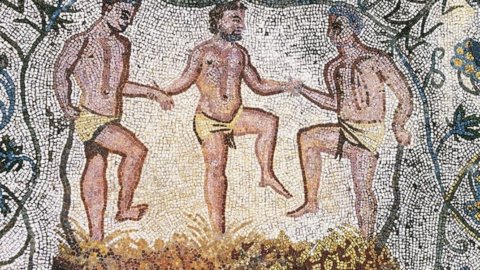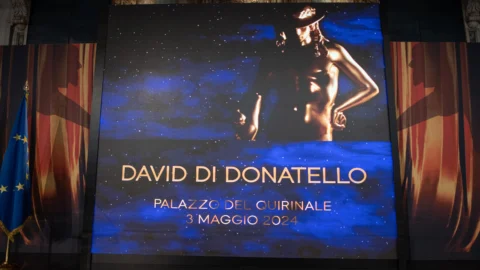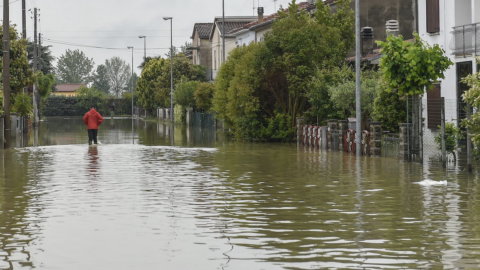Il god Bacchus during a trip he decided to take a break in the near Monte Massico to cool off. He knocked, in the guise of a beggar, on the door of a old farmer, Falernus, who welcomed him generously offering him plenty of food. Such generosity was rewarded: Bacchus, in fact, the next day, before setting off again, he transformed the farmer's land into a lush vineyard. From which was born a extraordinary wine that took the name of Falerno. At least that's how he tells it Tiberius Cazio Asconius Silius Italic poet, lawyer, and Roman politician lived from 25 to 101 AD, author of Punica, the longest Latin epic poem that has come down to us (12.202 verses).
More believably the the discovery of this wine dates back to 212-211 BC when Hannibal's troops put Ager Falernus to fire and sword for supremacy over this area of Campania. However, the Carthaginian leader decided to spare a small farm owned by Fabius Maximus the Procrastinator in Massico from destruction.
After the defeat of the Carthaginians that wine produced in Ager Falernus became the most loved by the Romans.
Coming to more modern times, Falerno wine enters the category of wines with a European brand back in 1989; his disciplinary it is subsequently changed to the most recent Ministerial Decree of 7 March 2014. Its full denomination is "Falerno del Massico" since its production area surrounds on three sides the entire mountain massif of Monte Massico located in the province of Caserta at the limits with the Garigliano river, which marks the administrative limit of the Campania region with the Lazio region.
Monte Massico develops in a North-East/South-West direction reaching a few steps from the sea and divides the entire production area into two sub-zones with completely different pedoclimatic characteristics. The south-eastern slope benefits from sunshine in the early hours of the morning unlike the western slope; sea breezes beat the coast throughout the summer; there are no reliefs that shelter from the northern winds; in fact, in the north, the volcanic massif of Roccamonfina appears isolated and not connected to other reliefs.
The geological map highlights a variability of extremely interesting pedological substrates as it passes from the sands of the Quaternary dune located on the coast to the volcanic soils of the volcano's offshoots.
In turn the massif of Monte Massico is calcareous in nature and slopes very gently towards the plain of the Savone river resulting in a very heterogeneous hilly landscape made up of small valleys and sunny slopes. L'The temperature range of this area determines an interesting production of polyphenols in the grapes which give the wines completely original organoleptic sensations.
In this area the ancient Romans cultivated the most famous wine of antiquity, mentioned by numerous poets (Martial, Horace, Juvenal); it is the only ancient wine of which Pliny even describes a zoning in three sub-territories (Caucinum, Faustianum and Falernus).
The Falernus in its version white requires a blend of 85% Falanghina; the red Falerno requires a minimum use of 60% Aglianico and Piedirosso up to a maximum of 40%. A third version of the red Falerno requires the use of the Primitivo vine for a minimum of 85%. The extreme variability of the soils and climatic factors, as well as of the grapes, allows the widest expression of the organoleptic sensations ranging from the most marked minerality to the balsamic notes.
The tannins of red Falerno, due to the presence of Aglianico, is closely correlated to the aging operations in the cellar. Depending on the origin of the grapes, the manufacturing companies are now able to significantly differentiate the offer of labels. The chemical parameters foreseen by the disciplinary regulate the acidity, non-invasive and pleasant, and the dry extract which gives these wines an extreme sapidity.
Chemical Parameters:
Falerno del Massico bianco: Minimum total acidity 5 g/l, Net dry extract 15 g/l. Alcoholic strength 12% vol
Falerno del Massico Rosso and Rosso Riserva: Minimum total acidity 4.5 g/l, Net dry extract 20 g/l. Alcoholic strength 12.50% vol.
Falerno del Massico Primitivo and Primitivo riserva: Minimum total acidity 4.5 g/l, Net dry extract 23 g/l. Alcoholic strength 13% vol.
Source: EEC Reg. published in the OJEC under no. 203 of 31 August 1989 and subsequent amendments.
We close with the last historical-archaeological annotation. On a Pompeii wall an inscription has been found which shows how much this wine was appreciated by the Romans. There is written: «Edoné makes it known: here they drink for 1 as; if you pay for 2, you will drink a better wine; with 4, you will have Falernian wine».
Not only good but also expensive and therefore reserved for those who could afford it.





